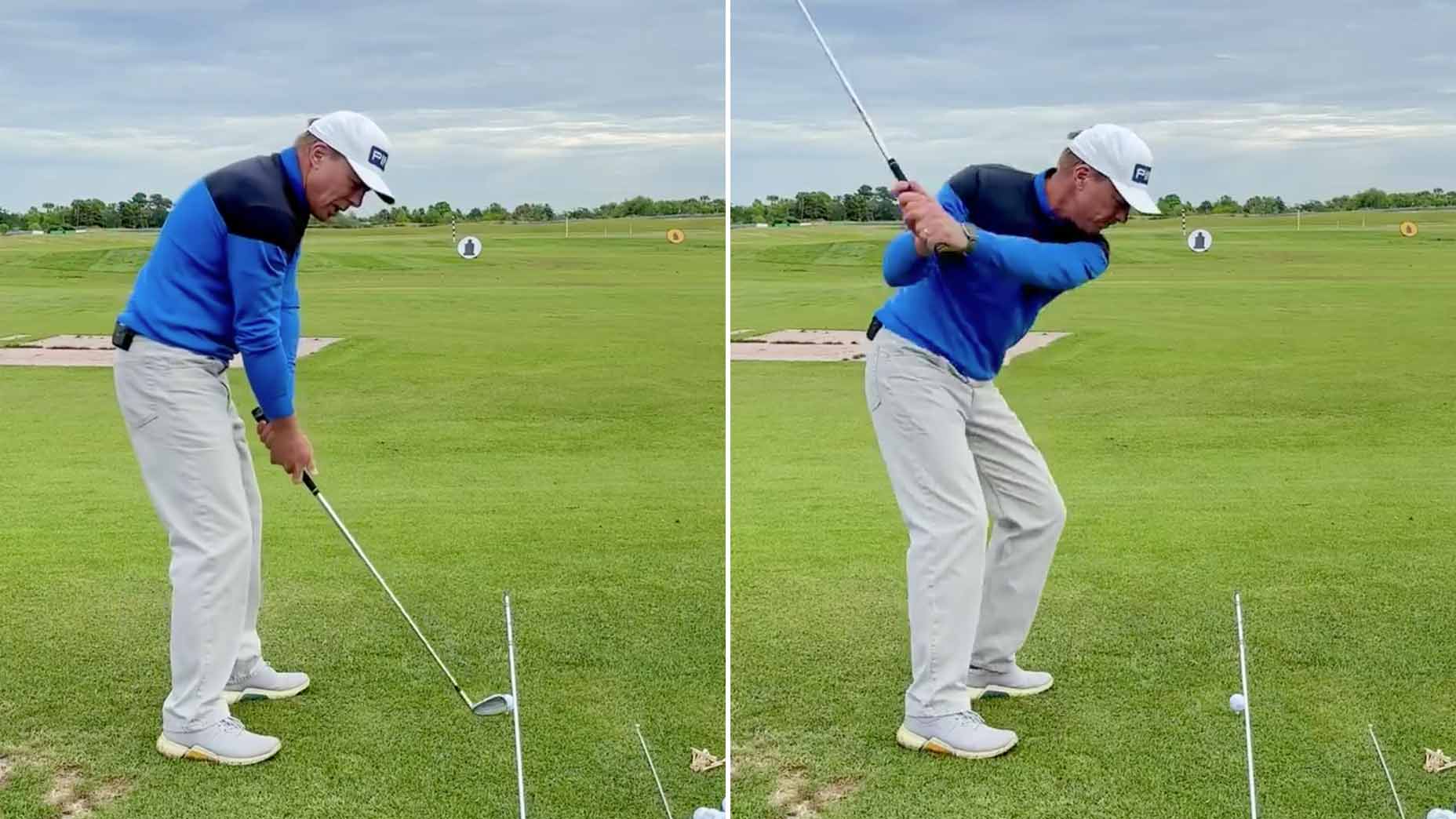Golf Logo
Use this simple drill to cure your ugly slice for good
SHARE
- Share on Facebook
- Share on Twitter
- Share by Email
InsideGOLF Holiday Bonus
FREE GOLF HAT
Hitting a slice is no fun when you're on the golf course. Here's how to get rid of it for good, courtesy of GOLF Top 100 Teacher Andrew Rice.
@AndrewRiceGolf
A slice is one of the most frustrating shot shapes for recreational golfers. It’s a shot that has little power and is difficult to control — an awful combo for someone looking to improve.
Go to any range and you’ll see plenty of weekend warriors wailing away and watching as their balls take a quick right turn. It’s a debilitating shot shape, and one that will have you contemplating quitting the game when you can’t get rid of it.
If this sounds like you, worry not. A slice is a shot shape that many of us have struggled with in our careers — and it’s one that can be solved with just a bit of practice. Check out the drill below from GOLF Top 100 Teacher Andrew Rice to learn how.
My KINGPIN Anti-Slice Drill! If you suffer from this all too common malady, you need to give this one a try. pic.twitter.com/QHUghfq1J0
— Andrew Rice (@AndrewRiceGolf) March 10, 2024
The first step to curing your slice is understanding why a slice occurs. The answer to that is simple: the swing path is out-to-in and the face is open relative to the path. With that knowledge, we can then begin to take steps to correct the problems.
Take an alignment stick and jab it in the ground at an angle pointing down your target line. Make sure the end of the alignment stick is about a foot and a half above the ground so that when you make a downswing you have room for your club to pass underneath it. Then, place a ball on the ground directly below the end of the alignment stick.
When you start your takeaway, make sure you keep the clubface a little more shut than you usually would. You can replicate this feeling by turning the clubface toward the ground during the backswing.
On the downswing, your only goal should be to swing the club beneath the alignment stick above your ball. If you come over the top with and out-to-in path, you’ll hit the stick. Instead, keep it shallow and go underneath the obstacle.
“If you want to make changes, you’ve got to make sure you’re actually making changes,” Rice says. “This will help. Give it a try.”

Golf.com Editor
Zephyr Melton is an assistant editor for GOLF.com where he spends his days blogging, producing and editing. Prior to joining the team at GOLF, he attended the University of Texas followed by stops with the Texas Golf Association, Team USA, the Green Bay Packers and the PGA Tour. He assists on all things instruction and covers amateur and women’s golf. He can be reached at zephyr_melton@golf.com.